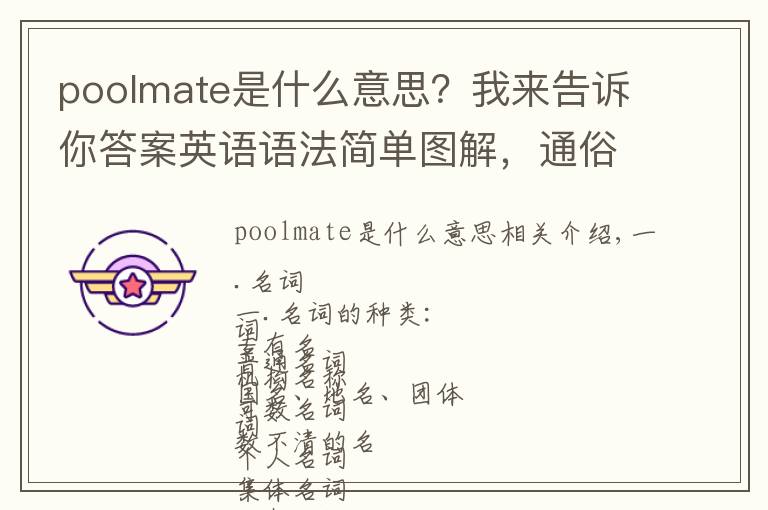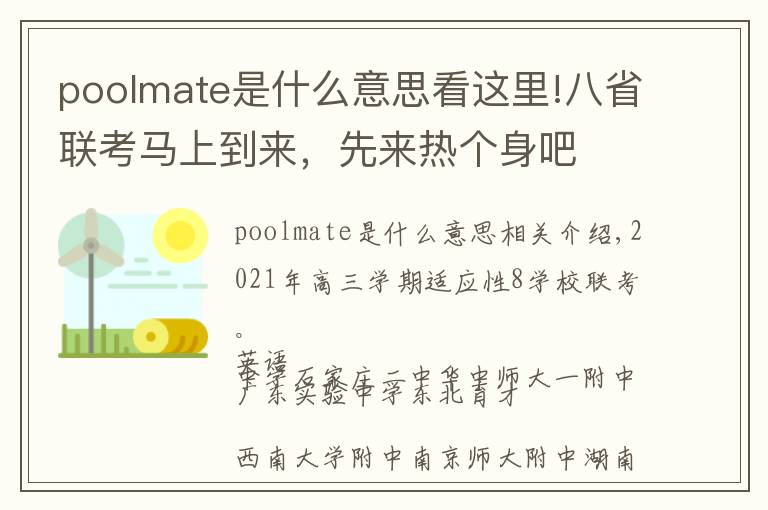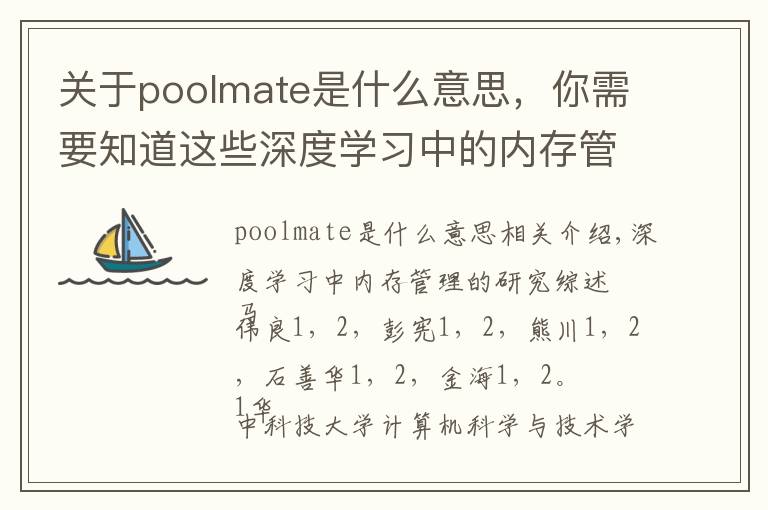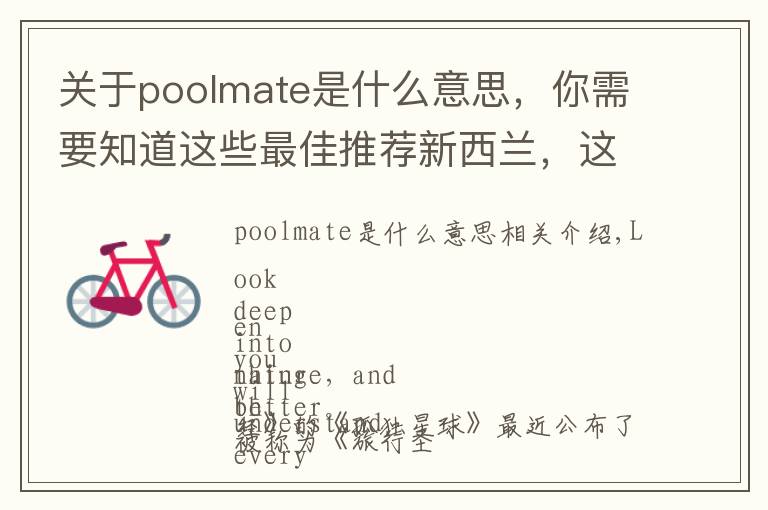一.名词
一.名词的种类:
专有名词
普通名词
国名、地名、团体机构名称
可数名词
数不清的名词
个人名词
集体名词
抽象名词
物质名词
二。名词数目:
1.规则名词的复数形式:
名词的复数形式,一般在单数形式后加上-s或-es。
现将构成方法与读音规则列表如下:规则 | 例词 | ||
1 | 一般情况在词尾加-s | map-maps, sea-seas, girl-girls, day-days | |
2 | 以s, x, ch, sh结尾的名词后加-es | class-classes, box-boxes, watch-watches, dish-dishes | |
3 | 以-f或-fe结尾的词 | 变-f和-fe为v再加-es | leaf-leaves, thief-thieves, knife-knives, loaf-loaves, wife-wives |
加-s | belief-beliefs, chief-chiefs, proof-proofs, roof-roofs, gulf-gulfs | ||
4 | 以辅音字母加y结尾的名词,变y为i加-es | party-parties, family-families, story-stories, city-cities | |
5 | 以元音字母加y结尾的名词,或专有名词以y结尾的,加-s | toy-toys, boy-boys, day-days, ray-rays, Henry-Henrys | |
6 | 以辅音字母加-o结尾的名词 | 一般加-es | hero-heroes, Negro-Negroes, potato-potatoes, tomato-tomatoes |
不少外来词加-s | piano-pianos, photo-photos, auto-autos, kilo-kilos, solo-solos | ||
两者皆可 | zero-zeros/zeroes, volcano-volcanoes/ volcanos | ||
7 | 以元音字母加-o结尾的名词加-s | radio-radios, bamboo-bamboos, zoo-zoos | |
8 | 以-th结尾的名词加-s | truth-truths, mouth-mouths, month-months, path-paths, |
2. 不规则名词复数:
英语里有些名词的复数形式是不规则的,现归纳如下:
规则 | 例词 | ||
1 | 改变名词中的元音字母或其他形式 | man-men, woman-women, foot-feet, goose-geese, mouse-mice | |
2 | 单复数相同 | sheep, deer, series, means, works, fish, species li, yuan, jin, | |
3 | 只有复数形式 | ashes, trousers, clothes, thanks, goods, glasses, compasses, contents | |
4 | 一些集体名词总是用作复数 | people, police, cattle, staff | |
5 | 部分集体名词既可以作单数(整体)也可以作复数(成员) | audience, class, family, crowd, couple, group, committee, government, population, crew, team, public, enemy, party | |
6 | 复数形式表示特别含义 | customs(海关), forces(军队), times(时代), spirits(情绪), drinks(饮料), sands(沙滩), papers(文件报纸), manners(礼貌), looks(外表), brains(头脑智力), greens(青菜), ruins(废墟) | |
7 | 表示“某国人” | 加-s | Americans, Australians, Germans, Greeks, Swedes, Europeans |
单复数同形 | Swiss, Portuguese, Chinese, Japanese | ||
以-man或-woman结尾的改为-men,-women | Englishmen, Frenchwomen | ||
8 | 合成名词 | 将主体名词变为复数 | sons-in-law, lookers-on, passers-by, story-tellers, boy friends |
无主体名词时将最后一部分变为复数 | grown-ups, housewives, stopwatches | ||
将两部分变为复数 | women singers, men servants |
III. 名词的所有格:
名词在句中表示所有关系的语法形式叫做名词所有格。所有格分两种:一是名词词尾加’s构成,二是由
介词of加名词构成。前者多表示有生命的东西,后者多表示无生命的东西。
1. ’s所有格的构成:
单数名词在末尾加’s | the boy’s father, Jack’s book, her son-in-law’s photo, | |
复数名词 | 一般在末尾加’ | the teachers’ room, the twins’ mother, |
不规则复数名词后加’s | the children’s toys, women’s rights, | |
以s结尾的人名所有格加’s或者’ | Dickens’ novels, Charles’s job, the Smiths’ house | |
表示各自的所有关系时,各名词末尾均须加’s | Japan’s and America’s problems, Jane’s and Mary’s bikes | |
表示共有的所有关系时在最后一词末加’s | Japan and America’s problems, Jane and Mary’s father | |
表示"某人家""店铺",所有格后名词省略 | the doctor’s, the barber’s, the tailor’s, my uncle’s |
2. ’s所有格的用法:
1 | 表示时间 | today’s newspaper, five weeks’ holiday |
2 | 表示自然现象 | the earth’s atmosphere, the tree’s branches |
3 | 表示国家城市等地方的名词 | the country’s plan, the world’s population, China’s industry |
4 | 表示工作群体 | the ship’s crew, majority’s view, the team’s victory |
5 | 表示度量衡及价值 | a mile’s journey, five dollars’ worth of apples |
6 | 与人类活动有特殊关系的名词 | the life’s time, the play’s plot |
7 | 某些固定词组 | a bird’s eye view, a stone’s throw, at one’s wit’s end(不知所措) |
3. of所有格的用法:
用于无生命的东西:the legs of the chair, the cover of the book
用于有生命的东西,尤其是有较长定语时:the classrooms of the first-year students
用于名词化的词:the struggle of the oppressed
二.冠词
冠词分为不定冠词(a, an),定冠词(the),和零冠词。
I. 不定冠词的用法:
1 | 指一类人或事,相当于a kind of | A plane is a machine that can fly. |
2 | 第一次提及某人某物,非特指 | A boy is waiting for you. |
3 | 表示“每一”相当于every,one | We study eight hours a day. |
4 | 表示“相同”相当于the same | We are nearly of an age. |
5 | 用于人名前,表示不认识此人或与某名人有类似性质的人或事 | A Mr. Smith came to visit you when you were out That boy is rather a Lei Feng. |
6 | 用于固定词组中 | A couple of, a bit, once upon a time, in a hurry, have a walk, many a time |
7 | 用于quite, rather, many, half, what, such之后 | This room is rather a big one. |
8 | 用于so(as, too, how)+形容词之后 | She is as clever a girl as you can wish to meet. |
II. 定冠词的用法:
1 | 表示某一类人或物 | The horse is a useful animal. |
2 | 用于世上独一无二的事物名词前 | the universe, the moon, the Pacific Ocean |
3 | 表示说话双方都了解的或上文提到过的人或事 | Would you mind opening the door? |
4 | 用于乐器前面 | play the violin, play the guitar |
5 | 用于形容词和分词前表示一类人 | the reach, the living, the wounded |
6 | 表示“一家人”或“夫妇” | the Greens, the Wangs |
7 | 用于序数词和形容词副词比较级最高级前 | He is the taller of the two children. |
8 | 用于国家党派等以及江河湖海,山川群岛的名词前 | the United States, the Communist Party of China, the French |
9 | 用于表示发明物的单数名词前 | The compass was invented in China. |
10 | 在逢十的复数数词之前,指世纪的某个年代 | in the 1990’s |
11 | 用于表示单位的名词前 | I hired the car by the hour. |
12 | 用于方位名词,身体部位名词,及表示时间的词组前 | He patted me on the shoulder. |
III. 零冠词的用法:
1 | 专有名词,物质名词,抽象名词,人名地名等名词前 | Beijing University, Jack, China, love, air |
2 | 名词前有this, my, whose, some, no, each, every等限制 | I want this book, not that one. / Whose purse is this? |
3 | 季节,月份,星期,节假日,一日三餐前 | March, Sunday, National Day, spring |
4 | 表示职位,身份,头衔的名词前 | Lincoln was made President of America. |
5 | 学科,语言,球类,棋类名词前 | He likes playing football/chess. |
6 | 与by连用表示交通工具的名词前 | by train, by air, by land |
7 | 以and连接的两个相对的名词并用时 | husband and wife, knife and fork, day and night |
8 | 表示泛指的复数名词前 | Horses are useful animals. |
三.代词:
I. 代词可以分为以下七大类:
1 | 人称代词 | 主格 | I, you, he, she, it, we, you, they |
宾格 | me, you, him, her, it, us, you, them | ||
2 | 物主代词 | 形容词性 | my, your, his, her, its, our, their |
名词性 | mine, yours, his, hers, its, ours, theirs | ||
3 | 反身代词 | myself, yourself, himself, herself, itself, ourselves, yourselves, themselves | |
4 | 指示代词 | this, that, these, those, such, some | |
5 | 疑问代词 | who, whom, whose, which, what, whoever, whichever, whatever | |
6 | 关系代词 | that, which, who, whom, whose, as | |
7 | 不定代词 | one/ some/ any, each/ every, none/ no, many/ much, few/ little/ a few/ a little, | |
other/ another, all/ both, neither/ either |
II. 不定代词用法注意点:
1. one, some与any:
1) one可以泛指任何人,也可特指,复数为ones。some多用于肯定句,any多用于疑问句和否定句。
One should learn to think of others.
Have you any bookmarks? No, I don’t have any bookmarks.
I have some questions to ask.
2) some可用于疑问句中,表示盼望得到肯定的答复,或者表示建议,请求等。
Would you like some bananas? Could you give me some money?
3) some 和any修饰可数名词单数时,some表示某个,any表示任何一个。
I have read this article in some magazine. Please correct the mistakes, if any.
4) some和数词连用表示“大约”,any可与比较级连用表示程度。
There are some 3,000 students in this school. Do you feel any better today?
2. each和every:
each强调个别,代表的数可以是两个或两个以上,而every强调整体,所指的数必须是三个或三个以上。
Each student has a pocket dictionary. / Each (of us) has a dictionary. / We each have a dictionary.
Every student has strong and weak points. / Every one of us has strong and weak points.
3. none和no:
no等于not any,作定语。none作主语或宾语,代替不可数名词,谓语用单数,代替可数名词,谓语单复数皆可以。
There is no water in the bottle.
How much water is there in the bottle? None.
None of the students are (is) afraid of difficulties.
4. other和another:
1) other泛指“另外的,别的”常与其他词连用,如:the other day, every other week, some other reason, no other way,
the other特指两者中的另外一个,复数为the others。如:
He held a book in one hand and his notes in the other.
Two students in our class failed, but all the others passed the exam.
2) another指“又一个,另一个”无所指,复数形式是others,泛指“别的人或事”如:
I don’t like this shirt, please show me another (one).
The trousers are too long, please give me another pair / some others.
Some like football, while others like basketball.
5. all和both, neither和either
all表示不可数名词时,其谓语动词用单数。both和all加否定词表示部分否定,全部否定用neither和none.
All of the books are not written in English. / Not all of the books are written in English.
Both of us are not teachers. / Not both of us are teachers. / Either of us is a teacher.
四.形容词和副词
I. 形容词:
1. 形容词的位置:
1) 形容词作定语通常前置,但在下列情况后置:
1 | 修饰some, any, every, no和body, thing, one等构成的复合不定代词时 | nobody absent, everything possible |
2 | 以-able, -ible结尾的形容词可置于有最高级或only修饰的名词之后 | the best book available, the only solution possible |
3 | alive, alike, awake, aware, asleep等可以后置 | the only person awake |
4 | 和空间、时间、单位连用时 | a bridge 50 meters long |
5 | 成对的形容词可以后置 | a huge room simple and beautiful |
6 | 形容词短语一般后置 | a man difficult to get on with |
2) 多个形容词修饰同一个名词的顺序:
代词 | 数词 | 性状形容词 | ||||||||
冠词前的形容词 | 冠词 指示代词 不定代词 代词所有格 | 序数词 | 基数词 | 性质 状态 | 大小 长短 形状 | 新旧 温度 | 颜色 | 国籍 产地 | 材料 质地 | 名词 |
all both such | the a this another your | second next | one four | beautiful good poor | large short square | new cool | black yellow | Chinese London | silk stone |
3) 复合形容词的构成:
1 | 形容词+名词+ed | kind-hearted | 6 | 名词+形容词 | world-famous |
2 | 形容词+形容词 | dark-blue | 7 | 名词+现在分词 | peace-loving |
3 | 形容词+现在分词 | ordinary-looking | 8 | 名词+过去分词 | snow-covered |
4 | 副词+现在分词 | hard-working | 9 | 数词+名词+ed | three-egged |
5 | 副词+过去分词 | newly-built | 10 | 数词+名词 | twenty-year |
II. 副词
副词的分类:
1 | 时间副词 | soon, now, early, finally, once, recently | 5 | 频度副词 | always, often, frequently, seldom, never |
2 | 地点副词 | here, nearby, outside, upwards, above | 6 | 疑问副词 | how, where, when, why |
3 | 方式副词 | hard, well, fast, slowly, excitedly, really | 7 | 连接副词 | how, when, where, why, whether, however, meanwhile |
4 | 程度副词 | almost, nearly, very, fairly, quite, rather | 8 | 关系副词 | when, where, why |
III. 形容词和副词比较等级:
形容词和副词的比较等级分为原级,比较级和最高级。比较级和最高级的构成一般是在形容词和副词后加-er和-est,多音节和一些双音节词前加more 和most。
1. 同级比较时常常用 as…as…以及not so(as)…as…如:I am not so good a player as you are.
2. 可以修饰比较级的词有:much, many, a lot, even, far, a bit, a little, still, yet, by far, any, a great deal。
3. 表示一方随另一方变化时用“the more…the more…”句型。如:The harder you work, the more progress you will make.
4. 用比较级来表达最高级的意思。如:I have never spent a more worrying day.
5. 表示倍数的比较级有如下几种句型:
Our school is three times larger than yours./Our school is four times as large as yours./Our school is four times the size of yours.
6. 表示“最高程度“的形容词没有最高级和比较级。如:favourite, excellent, extreme, perfect。
五.介词
I. 介词分类:
1 | 简单介词 | about, across, after, against, among, around, at, below, beyond, during, in, on |
2 | 合成介词 | inside, into, onto, out of, outside, throughout, upon, within, without |
3 | 短语介词 | according to, because of, instead of, up to, due to, owing to, thanks to |
4 | 双重介词 | from among, from behind, from under, till after, in between |
5 | 分词转化成的介词 | considering(就而论), including |
6 | 形容词转化成的介词 | like, unlike, near, next, opposite |
II. 常用介词区别:
1 | 表示时间的in, on, at | at表示片刻的时间,in表示一段的时间,on总是与日子有关 |
2 | 表示时间的since, from | since 指从过去到现在的一段时间,和完成时连用,from指从时间的某一点开始 |
3 | 表示时间的in, after | in指在一段时间之后,after表示某一具体时间点之后或用在过去时的一段时间中 |
4 | 表示地理位置的in, on, to | in表示在某范围内,on指与什么毗邻,to指在某环境范围之外 |
5 | 表示“在…上”的on, in | on只表示在某物的表面上,in表示占去某物一部分 |
6 | 表示“穿过”的through, across | through表示从内部通过,与in有关,across表示在表面上通过,与on有关 |
7 | 表示“关于”的about, on | about指涉及到,on指专门论述 |
8 | between与among的区别 | between表示在两者之间,among用于三者或三者以上的中间 |
9 | besides与except的区别 | besides指“除了…还有再加上”,except指“除了,减去什么”,不放在句首 |
10 | 表示“用”的in, with | with表示具体的工具,in表示材料,方式,方法,度量,单位,语言,声音 |
11 | as与like的区别 | as意为“作为,以…地位或身份”,like为“象…一样”,指情形相似 |
12 | in与into区别 | in通常表示位置(静态),into表示动向,不表示目的地或位置 |
六.动词
I. 动词的时态:
1. 动词的时态一共有16种,以ask为例,将其各种时态的构成形式列表如下:
现在时 | 过去时 | 将来时 | 过去将来时 | |
一般 | ask / asks | asked | shall/will ask | should/would ask |
进行 | am/is/are asking | was/were asking | shall/will be asking | should/would be asking |
完成 | have/has asked | had asked | shall/will have asked | should/would have asked |
完成进行 | have/has been asking | had been asking | shall/will have been asking | should/would have been asking |
2. 现在完成时与一般过去时的区别:
1) 现在完成时表示过去发生的动作或存在的状况,但和现在有联系,强调的是对现在造成的影响或结果,它不能同表示过去的时间状语连用,汉译英时可加“已经”等词。简言之,利用过去,说明现在。如:
I have already read the novel written by the world-famous writer. (已经看过,且了解这本书的内容)
2) 一般过去时只表示过去发生的动作或状态,和现在无关,它可和表示过去的时间状语连用,汉译英时可加“过”,“了”等词。简言之,仅谈过去,不关现在。如:
I read the novel last month. (只说明上个月看了,不涉及现在是否记住)
I lived in Beijing for ten years.(只说明在北京住过十年,与现在无关)
3. 现在完成时与现在完成进行时的区别:
两者都可以表示“从过去开始一直持续到现在”,在含义上如着重表示动作的结果时,多用现在完成时,如着重表示动作一直在进行,即动作的延续性时,则多用现在完成进行时。一般不能用于进行时的动词也不能用于现在完成进行时。
I have read that book.我读过那本书了。
I have been reading that book all the morning. 我早上一直在读那本书。
4. 一般将来时的表达方式:
将来时 | 用法 | 例句 | |
1 | will/shall+动词原形 | 表示将来发生的动作或存在的状态 | My sister will be ten next year. |
2 | be going to+动词原形 | 含有“打算,计划,即将”做某事,或表示很有可能要发生某事 | It’s going to clear up. We’re going to have a party tonight. |
3 | be + doing 进行时表示将来 | go, come, start, move, leave, arrive等词可用进行时表示按计划即将发生的动作 | He is moving to the south. Are they leaving for Europe? |
4 | be about to + 动词原形 | 表示安排或计划中的马上就要发生的动作,后面一般不跟时间状语 | I was about to leave when the bell rang. The meeting is about to close. |
5 | be to + 动词原形 | 表示按计划进行或征求对方意见 | We’re to meet at the school gate at noon. |
6 | 一般现在时表示将来 | 时刻表上或日程安排上早就定好的事情,可用一般现在时表示将来 | The meeting starts at five o’clock. The plane leaves at ten this evening. |
II. 动词的被动语态:
常用被动语态 | 构成 | 常用被动语态 | 构成 | ||
1 | 一般现在时 | am/is/are asked | 6 | 过去进行时 | was/were being asked |
2 | 一般过去时 | was/were asked | 7 | 现在完成时 | have/has been asked |
3 | 一般将来时 | shall/will be asked | 8 | 过去完成时 | had been asked |
4 | 过去将来时 | should/would be asked | 9 | 将来完成时 | will/would have been asked |
5 | 现在进行时 | am/is/are being asked | 10 | 含有情态动词的 | can/must/may be asked |
注 意 事 项 | 被动语态的否定式是在第一个助动词或情态动词后加not,短语动词的被动态不可漏掉其中介副词。固定结构be going to, used to, have to, had better变为被动态时,只需将其后的动词变为被动态。 如: Trees should not be planted in summer. / The boy was made fun of by his classmates. Newspapers used to be sent here by the little girl. | ||||
汉语有一类句子不出现主语,在英语中一般可用被动结构表示。如: It is believed that… It is generally considered that… It is said that… It is well known that… It must be pointed out that… It is supposed that… It is reported that… It must be admitted that… It is hoped that… | |||||
下面主动形式常表示被动意义:如: The window wants/needs/requires repairing. The book is worth reading twice. The door won’t shut. / The play won’t act. The clothes washes well. / The book sells well. The dish tastes delicious. / Water feels very cold. | |||||
下面词或短语没有被动态: leave, enter, reach, become, benefit, cost, equal, contain, last, lack, fit, fail, have, appear, happen, occur, belong to, take place, break out, come about, agree with, keep up with, consist of, have on, lose heart等等 |
七.情态动词
I. 情态动词基本用法:
情态动词 | 用法 | 否定式 | 疑问式与简答 |
can | 能力(体力,智力,技能) 允许或许可(口语中常用) 可能性(表猜测,用于否定句或疑问句中) | can not / cannot /can’t do | Can…do…? Yes,…can. No,…can’t. |
could | couldn’t do | ||
may | 可以(问句中表示请求) 可能,或许(表推测) 祝愿(用于倒装句中) | may not do | May…do…? Yes,…may. No,…mustn’t/can’t. |
might | might not do | Might…do…? Yes,…might No,…might not. | |
must | 必须,应该(表主观要求) 肯定,想必(肯定句中表推测) | must not/mustn’t do | Must…do…? Yes,…must. No,…needn’t/don’t have to. |
have to | 只好,不得不(客观的必须,有时态人称变化) | don’t have to do | Do…have to do…? Yes,…do. No,…don’t. |
ought to | 应当(表示义务责任,口语中多用should | ought not to/oughtn’t to do | Ought…to do…? Yes,…ought. No,…oughtn’t. |
shall | 将要,会 用于一三人称征求对方意见 用于二三人称表示许诺、命令、警告、威胁等 | shall not/shan’t do | Shall…do…? Yes,…shall. No,…shan’t. |
should | 应当,应该(表义务责任) 本该(含有责备意味) | should not/shouldn’t do | Should…do…? |
will | 意愿,决心 请求,建议,用在问句中would比较委婉 | will not/won’t do | Will…do…? Yes,…will. No,…won’t. |
would | would not/wouldn’t do | ||
dare | 敢(常用于否定句和疑问句中) | dare not/daren’t do | Dare…do…? Yes,…dare. No,…daren’t. |
need | 需要 必须(常用于否定句和疑问句中) | need not/needn’t do | Need…do…? Yes,…must. No,…needn’t. |
used to | 过去常常(现在已不再) | used not/usedn’t/usen’t to do didn’t use to do | Used…to do…? Yes,…used. No,…use(d)n’t. Did…use to do…? Yes,…did. No,…didn’t. |
II. 情态动词must, may, might, could, can表示推测:
以must为例。must + do(be)是推测现在存在的一般状态进行;must + be doing 推测可能正在进行的事情;must +have done是推测可能已经发生过的事情。
1. must“肯定,一定”语气强,只用于肯定句中。
He must be a man from America. / He must be talking with his friend. / He must have already arrived there.
2. may和might“也许”,后者语气弱,更没有把握。可用于肯定句和否定句。
He may not be at home. / They might have finished their task.
3. can和could“可能”,could表示可疑的可能性,不及can’t语气强,用于肯定、否定、疑问句中。
The weather in that city could be cold now.
We could have walked there; it was so near.(推测某事本来可能发生,但实际上没有发生)
Can he be in the office now? No, he can’t be there, for I saw him in the library just now.(语气很强,常用于疑问句和否定句中)
III. 情态动词注意点:
1. can和be able to: 都可以表示能力。但be able to可以表达“某事终于成功”,而can无法表达此意。Be able to有更多的时态。另外,两者不能重叠使用。
2. used to和would: used to表示过去常常做现在已经不再有的习惯,而would只表示过去的习惯或喜好,不涉及现在。
3. need和dare作情态动词和实义动词的区别:
两者作情态动词时常用于否定句和疑问句。其形式为:needn’t/daren’t do;Need/dare…do…?
做实义动词时可用于肯定句,否定句和疑问句。其形式为:need(needs/needed)/dare(dares/dared) to do, don’t(doesn’t/didn’t) need/dare to do
八.非谓语动词
I. 非谓语动词的分类、意义及构成:
非谓语形式 | 构成 | 特征和作用 | |||
时态和语态 | 否定式 | 复合结构 | |||
不定式 | to do to be doing to have done | to be done to have been done | 在非谓语前加not | for sb. to do sth. | 具有名词,副词和形容词的作用 在句中做主、宾、定、表和状语 |
分词 | 现在分词 | doing having done | being done having been done | 具有副词和形容词的作用 在句中做定、表、宾补和状语 | |
过去分词 | done | ||||
动名词 | doing having done | being done having been done | sb’s doing | 具有名词的作用 在句中做主、宾、定和表语 |
II. 做宾语的非谓语动词比较:
情况 | 常用动词 | |
只接不定式做宾语的动词 | hope, want, offer, long, fail, expect, wish, ask, decide, pretend, manage, agree, afford, determine, promise, happen | |
只接动名词做宾语的动词或短语 | mind, miss, enjoy, imagine, practise, suggest, finish, escape, excuse, appreciate, admit, prevent, keep, dislike, avoid, risk, resist, consider | |
can’t help, feel like, succeed in, be fond of, object to, get down to, be engaged in, insist on, think of, be proud of, take pride in, set about, be afraid of, be tired of, look forward to, devote oneself to, be worth, be busy, pay attention to, stick to | ||
两者都可以 | 意义基本相同 | begin, start, like, love, hate, prefer, continue(接不定式多指具体的动作,接动名词多指一般或习惯行为) |
need, want, require(接动名词主动形式表示被动意义,若接不定式则应用被动形式) | ||
意义相反 | stop to do 停止手中事,去做另一件事 stop doing 停止正在做的事 | |
意义不同 | remember/forget/regret to do(指动作尚未发生) remember/forget/regret doing(指动作已经发生) | go on to do(接着做另外一件事) go on doing(接着做同一件事) |
try to do(设法,努力去做,尽力) try doing(试试去做,看有何结果) | mean to do(打算做,企图做) mean doing (意识是,意味着) | |
can’t help to do(不能帮忙做) can’t help doing(忍不住要做) |
III.非谓语动词做宾语补足语的区别:
常见动词 | 与宾语的逻辑关系及时间概念 | 例句 | |
不定式 | ask, beg, expect, get, order, tell, want, wish, encourage | 主谓关系。强调动作将发生或已经完成 | I heard him call me several times. |
have, notice, see, watch, hear, feel, let, make | |||
现在分词 | notice, see, watch, hear, find, keep, have, feel | 主谓关系。强调动作正在进行,尚未完成 | I found her listening to the radio. |
过去分词 | 动宾关系。动作已经完成,多强调状态 | We found the village greatly changed. |
IV. 非谓语动词做定语的区别:
区别 | 举例 | |
不定式 | 与被修饰词往往有动宾关系,一般式表示将来,进行式表示与谓语动作同时发生,完成式表示在谓语动词之前发生 | I have a lot of papers to type. I have a lot of papers to be typed. |
动名词 | 通常指被修饰词的用途,无逻辑上的任何关系 | Shall we go to the swimming pool? |
现在分词 | 与被修饰词之间是主谓关系,表示动作与谓语动作同时发生 | the boiling water / the boiled water the developing country/the developed country the falling leaves / the fallen leaves |
过去分词 | 与被修饰词之间是被动关系,表示动作发生在谓语动作之前,现已经完成 |
V. 非谓语动词做主语和表语的区别:
区别 | 举例 | |
不定式 | 多表示一个特定的具体的将来的动作,做主语时可以借助于it把不定式移到句子后面。做表语有时可和主语交换位置,而且意义不变,并且还能用what来提问主语或表语。 | My dream is to become a teacher. To obey the law is important. (dream, business, wish, idea, plan, duty, task做主语时常用) |
动名词 | 与不定式的功能区别不大,然而它更接近于名词,表示的动作比较抽象,或者泛指习惯性的动作,有时也可以用it做形式主语,做表语时可以和主语互换位置。 | It is no use saying that again and again. Teaching is my job. |
分词 | 无名词的性质,不能做主语。但是有形容词的性质,可以做表语,多表明主语的特征性质或者状态等,可被very, quite, rather等副词修饰。 现在分词多含有“令人…”之意,说明主语的性质特征,多表示主动,主语多为物。过去分词一般表示被动或主语所处的状态,含有“感到…”之意,主语多是人。 | The situation is encouraging. The book is well written. (常见分词有astonishing, moving, tiring, disappointing, puzzling, shocking, boring, amusing及其-ed形式) |
九.定语从句
I. 定语从句起了形容词的作用,在句中修饰一个名词或代词。被修饰的词叫做先行词,引导定语从句的词叫关系词,他的作用一是放在先行词与定语从句中间起了连接作用,二是在从句中担当一个成分,并与先行词保持数的一致。
关系词 | 先行词 | 从句成分 | 例句 | 备注 | |
关系代词 | who | 人 | 主语 | Do you know the man who is talking with your mother? | whom, which和that在从句中做宾语时,常可以省略,但介词提前时后面关系代词不能省略,也不可以用that |
whom | 人 | 宾语 | Mr. Smith is the person with whom I am working The boy (whom) she loved died in the war.. | ||
whose | 人,物 | 定语 | I like those books whose topics are about history. The boy whose father works abroad is my deskmate. | ||
that | 人,物 | 主语,宾语 | A plane is a machine that can fly. She is the pop star (that) I want to see very much. | ||
which | 物 | 主语,宾语 | The book (which) I gave you was worth $10. The picture which was about the accident was terrible. | ||
as | 人,物 | 主语,宾语 | He is such a person as is respected by all of us. This is the same pen as I lost yesterday. | as做宾语一般不省略 | |
关系副词 | when | 时间 | 时间状语 | I will never forget the day when we met there. | 可用on which |
where | 地点 | 地点状语 | This is the house where I was born. | 可用in which | |
why | 原因 | 原因状语 | I can’t imagine the reason why he turned down my offer. | 可用for which |
II. that与which, who, whom的用法区别:
情况 | 用法说明 | 例句 |
只用that的情况 | 1. 先行词为all, everything, anything, nothing, little, much,等不定代词时。 2. 先行词被all, any, every, each, much, little, no, some, few等修饰时 3. 先行词有形容词最高级和序数词修饰时 4. 先行词既指人又指物时 5. 先行词被the only, the very修饰时 6. 句中已经有who或which时,为了避免重复时 | 1.He told me everything that he knows. 2.All the books that you offered has been given out. 3.This is the best film that I have ever read. 4.We talked about the persons and things that we remembered. 5.He is the only man that I want to see. 6.Who is the man that is making a speech? |
只用which, who, whom的情况 | 1. 在非限制性定语从句中,只能用which指代物,用who/whom指人 2. 在由“介词+关系代词”引导的定语从句中,只能用which指物,whom指人。 3. 先行词本身是that时,关系词用which, 先行词为those, one, he时多用who。 | He has a son, who has gone abroad for further study. I like the person to whom the teacher is talking. Those who respect others are usually respected by others. |
III. as与which的区别:
定语从句 | 区别 | 例句 |
限制性定语从句中 | 名词前有such和the same修饰时,关系代词用as,不能用which | He is not such a fool as he looks. Don’t read such books as you can’t understand. |
非限制性定语从句中 | as和which都可以指代前面整个主句。如果有“正如,象”的含义,并可以放在主句前,也可以放在后面,那么用as;而which引导的从句只能放主句后,并无“正如”的意思。 | They won the game, as we had expected. They won the game, which we hadn’t expected. As is well known, he is a famous film star in the 1980s. |
IV. 限制性定语从句与非限制性定语从句的区别:
类别 | 语法意义及特征 | 例句 |
限制性定语从句 | 对先行词起修饰限制作用,如果去掉,主句意思就不完整明确,这种从句与主句的关系十分密切,写时不用逗号分开。 | The accident happened at the time when I left. |
非限制性定语从句 | 对先行词作附加的说明,与主句的关系不十分密切,较松散。从句和主句之间用逗号分开,相当于一个插入语,不能用that引导,关系代词做宾语时也不能省略。 | His mother, whom he loved deeply, died ten years ago. |
十 名词性从句
种类 | 作用 | 常用关联词 | 例句 |
主语从句 | 在复合句中做主语,相当于名词,一般置谓语之前,也可用it作形式主语,主语从句放主句之后 | that, whether, if, as if, as though, who, whose, which, how, when, where, why, what, whatever, whoever, wherever | Whether he will come or not doesn’t matter much. Whoever comes here will be welcome. |
表语从句 | 在复合句中做表语,相当于名词,位于系动词之后 | It looks as if it is going to snow. | |
宾语从句 | 在复合句中做宾语,相当于名词 | He asked me which team could win the game. | |
同位语从句 | 放在名词之后(news, problem, idea, suggestion, advice, thought, hope, fact等) 表明其具体内容 | You have no idea how worried we are. The fact that he lied again greatly surprised us. |
十一 状语从句
种类 | 连接词 | 注意点 |
时间状语 | when, whenever, while, as, before, after, until, till, by the time, as soon as, hardly…when, no sooner…than, the moment, the minute, immediately, directly, instantly | 主句表示将来意义时,从句须用一般现在时;while引导的从句中动词一般是延续性的;until用在肯定句中主句动词是延续性的,而否定句中主句动词为短暂性的。 |
地点状语 | where, wherever | |
原因状语 | because, as, since, now that | because语气最强,since较弱,表示大家都明了的原因,as又次之。 |
条件状语 | if, unless, once, in case, as long as, on condition that | 从句中动词时态不可用将来时,常用一般时代替 |
目的状语 | so that, in order that, for fear that | so that和in order that后常接may, should, could, would等情态动词 |
结果状语 | so…that, such…that | |
比较状语 | than, as…as, not so/as…as, the more…the more | |
方式状语 | as if, as though, as | as if 和as though引导的从句一般用虚拟语气。 |
让步状语 | though, although, even if, even though, as, no matter what, whatever, no matter who, whoever, no matter which, whichever, no matter how, however, no matter when, whenever | as在让步状语从句中常用倒装形式;although和though用正常语序,可和yet连用,但不可和but连用 |
十二 倒装句
种类 | 倒装条件 | 例句 |
完全倒装 | here, there, up, down, in, out, off, away等副词开头的句子表示强调 | Out rushed the children. |
表示地点的介词短语作状语位于句首 | Under the tree stood two tables and four chairs. | |
强调表语,置于句首,或为保持句子平衡 | Present at the meeting were 1,000 students. | |
部分倒装 | never, hardly, scarcely, seldom, little, not until, not等表示否定意义的副词放于句首 | Hardly did I know what had happened. |
only和修饰的状语放于句首 | Only then did he realized the importance of English. | |
not only…but also连接并列的句子,前倒后不倒 | Not only does he know French, but also he is expert at it. | |
neither…nor…连接并列的句子,前后都倒装 | Neither do I know it, nor do I care about it. | |
so…that, such…that中的so或such及修饰的成分放于句首时前倒后不倒 | So busy is he that he can not go on a holiday. | |
as引导的让步状语 | Child as he is, he has learned a lot. | |
so, neither或nor表示前句内容也适用于另外的人或事。 | He can play the piano. So can i. | |
用于表示祝愿的祈使句中 | May you be in good health! | |
省略if的虚拟条件 | Were I you, I would not do it in this way. |
十三 虚拟语气
类别 | 用法 | 例句 | |
If引导的条件从句 | 与现在事实相反 | 从句动词:过去式(be用were) 主句动词:should/would/could/might+动词原形 | If he were here, he would help us. |
与过去事实相反 | 从句动词:had+过去分词 主句动词:should/would/could/might+have+过去分词 | If I had been free, I would have visited you. | |
与将来事实相反 | 从句动词:过去式 / should+动词原形 / were+不定式 主句动词:should/would/could/might+动词原形 | If it should rain tomorrow, we would not go camping. | |
其它状语从句 | as if引导的状语从句中动词用过去式或过去完成式 | They are talking as if they had been friends for years. | |
in order that / so that引导的状语从句中动词用can / could / may / might / would等+动词原形 | Turn on the light so that we can see it clearly. | ||
宾语从句 | demand, suggest, order, insist后接的从句中动词为should+动词原形 | He suggested that we not change our mind. | |
wish后的从句中分别用过去式,过去完成式和should/would+动词原形表示与现在,过去和将来情况相反 | I wish I could be a pop singer. | ||
主语从句 | 在It is necessary / important / strange that…, It is suggested / demanded / ordered / requested that… 等从句中,谓语动词用should+动词原形 | It is strange that such a person should be our friends. | |
其它句型中 | It is time that…句型中动词用过去式或should+动词原形 | It’s high time that we left. | |
would rather所接的从句中动词用过去式或者过去完成式 | I would rather you stayed at home now. | ||
If only句型中动词常用过去式或者过去完成式,表示强烈的愿望 | If only our dream had come true! |
1.《poolmate是什么意思?终于找到答案了英语语法简单图解,通俗易懂!早点看到就好啦!》援引自互联网,旨在传递更多网络信息知识,仅代表作者本人观点,与本网站无关,侵删请联系页脚下方联系方式。
2.《poolmate是什么意思?终于找到答案了英语语法简单图解,通俗易懂!早点看到就好啦!》仅供读者参考,本网站未对该内容进行证实,对其原创性、真实性、完整性、及时性不作任何保证。
3.文章转载时请保留本站内容来源地址,https://www.lu-xu.com/tiyu/2082124.html







